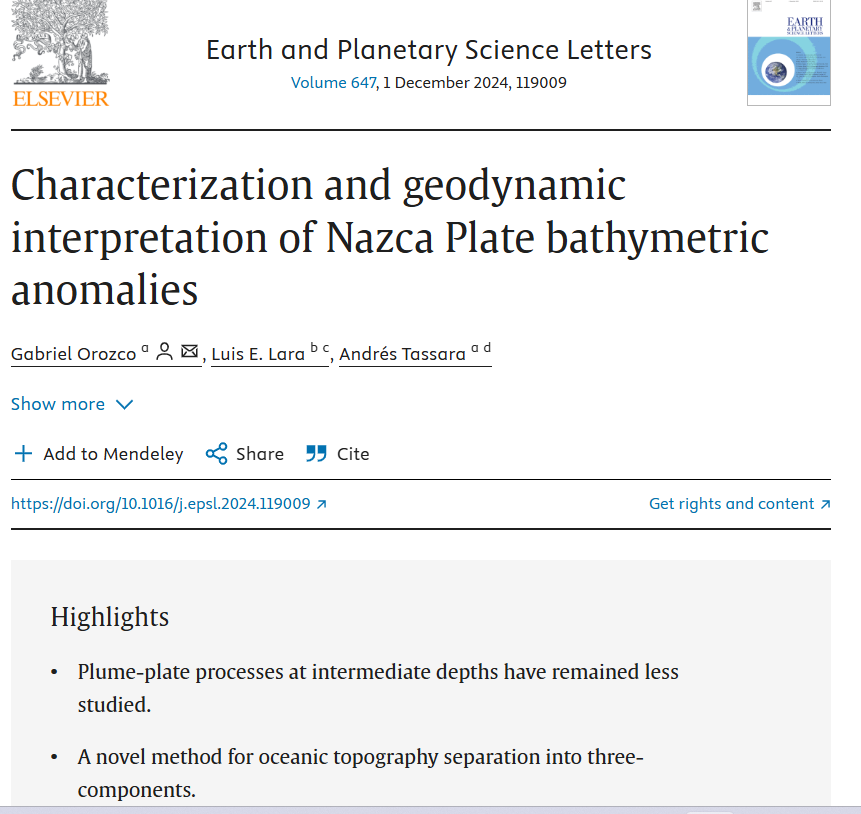Autor Ckelar: Luis E. Lara
Otros autores: Gabriel Orozco, Andrés Tassara
Revista científica: Earth and Planetary Science Letters
Abstract
The interaction between upwelling plumes and the oceanic lithosphere can provide important clues about the internal structure and dynamics of the Earth. Plume-derived processes disturb the lithosphere at different depths, amplitudes, and wavelengths. While the spatially wider process is dynamic uplift, commonly described as on the order of 1000 km wide and 1 km high bathymetric swell, volcanism is the most focused plume manifestation. These two end-members are commonly described and measured in terms of volumetric rates, such as buoyancy flux and volcanic production rate, respectively. However, intermediate processes such as magmatic trapping at lithospheric depths, although reported, has remained less studied. While the topographic separation between volcanic and regional (non-volcanic) features has numerous developments, the recognition of signatures of processes occurring at intermediate depths is a problem that has been less studied.
To better understand the relationship between plate structure and the distribution of plume effects, we investigated the spatial distribution of topographic plume signatures on the relatively fast and thin oceanic Nazca plate. Using morphological criteria, we adjusted the width of two filtered surfaces, which together allow us to divide the bathymetric anomalies into three components that could be reflecting morphological features supported below, inside, and above the plate.
The resulting decomposition suggests the existence of two superimposed components of swells on the Nazca plate, contrasting in distribution, morphology, and nature: local swells exhibit a clear spatial correlation with volcanic chains. The regional swell component in turn collectively encompasses all hotspots in the Nazca plate and show widths up to 2000 km. We hypothesize distinct driving processes for both swell components, with local swells connected to the intra-lithospheric domain and regional swells probably associated with sub-lithospheric processes.
Full paper here

